We were able to get rinky-dink bikes and make our way out of Kashgar. It was not hitchhiking, but it was an unconventional means of transportation, and it gave us a chance to meet people and get a feel for the countryside along the six mile stretch between the city and the ruins of Jiaohe.
Biking out to Jiaohe
We pedaled out of Turpan, taller buildings giving way to single-story mud brick farmhouses. Soon, even these buildings appeared infrequently. The landscape shifted into grape farms, long strings of green among the red dirt fields with a handful of houses with large, Uighur-style gates fronting the road.
Crossing a small bridge, we chained our bikes up in the parking lot and entered the ruins of Jiaohe, an ancient Silk Road capital.
Galen at Turpan
Unlike many other ancient Silk Road cities, significant amounts of Jiaohe’s original architecture still remain, in part because the city was not so much built as it was carved. In Chinese, Jiaohe means “river intersection.” It was so named because of two small desert rivers come together at the city’s southeastern foot. Between these two rivers, the city is built out of a leaf-shaped plateau with tall cliff faces on either side, providing a natural defense and leaving much of the city standing, unlike the nearby Gaochang, which I would visit a few days later.
Entering Jiaohe
At first, the hulking remains of buildings seemed like they could almost be naturally formed from the rock, with large caves dug out of mud structures, patches of grass growing in places that were once plazas, the corners of structures that were once walls standing like crenelated hoodoos in the open.
Windows
The walls, though, were regularly pockmarked with holes and the towers were far too square to be naturally formed. Windows were clearly carved into rocks. The deeper in we walked, the more man-made the ruins came to look.
Few ruins in China remain as well preserved as this; see our visit to the fakish Great Wall, built in the last decade. In China, everything must be torn down and rebuilt. Nothing is allowed to remain untouched.
Mommy, watch me destroy history!
Near the entrance of Jiaohe, we saw one of the reasons why. A mother in a high-slit dress and pumps, protecting herself from the sun with an umbrella and sunglasses, took a photo of her son jumping on some of the mud ruins. After a few minutes, a pair of guards yelled at her and her son jumped off the ruins. However, when we later came past, the guards, employed to protect the ruins, were taking a break, lazing in the shade on one of the ruins.
Paid to protect, guards on their break climb on the ruins themselves
There is little signage to explain anything, but Jiaohe has a long history. A city had been there since before Julius Caesar, though I was unclear on how much of what we were seeing remained from that time. The city functioned as a capital of several Silk Road kingdoms and a major node of commerce and government for those traveling to or from China. The city had a variety of rulers, from Han Chinese, to Uighurs, to Kyrgyzs, but it eventually was destroyed in the thirteenth century by Genghis Khan as he swept across Eurasia.
Jiaohe is built out of mud and bricks
Near the entrance, there were a sizable number of visitors roaming the park. I even watched a tour bus with a flag-touting tour guide coming into the ruins with us. After five minutes, however, I realized we were alone. “Okay, everybody, let’s go.” I remembered the tour guide telling his charges. “We only have thirty minutes until we need to be back on the bus.”
Other places had been packed with tourists, yet they had not been as grand as Jiaohe. On the way to Jiaohe, we had passed an “Ancient Uighur Village,” a disneyish reconstruction of a Uighur village full of tour buses. Strangely, here, amongst the spires of real history, in a city where Genghis Khan had raped and pillaged, few tourists could be bothered to spend much time here.
Hoodoos
We wandered deeper into Jiaohe for two and a half hours. The innards of the ruins were crossed by roads dug out of the stone walls. Deep in the northwest corner of the ruins, we came across an ancient Buddhist temple, surrounded by a score of pagodas, though only the pagodas’ bases remained.
Once a monument to Buddhism and a symbol of the stretch of ideas throughout the Silk Road
This forest of pagodas had once been an important monument to a religion that has long since disappeared from these parts, as part of a funnel pumping Buddhism into China. Now, the people here who were once Buddhist are Muslim and all that remains of their fathers’ faith is this monument.
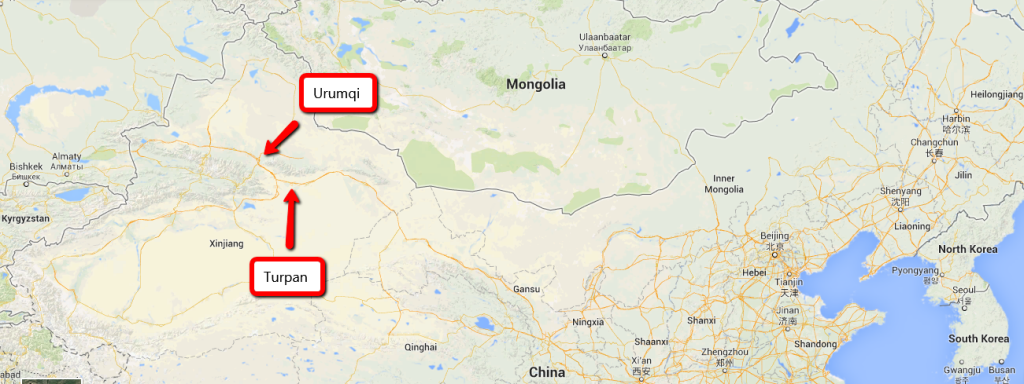
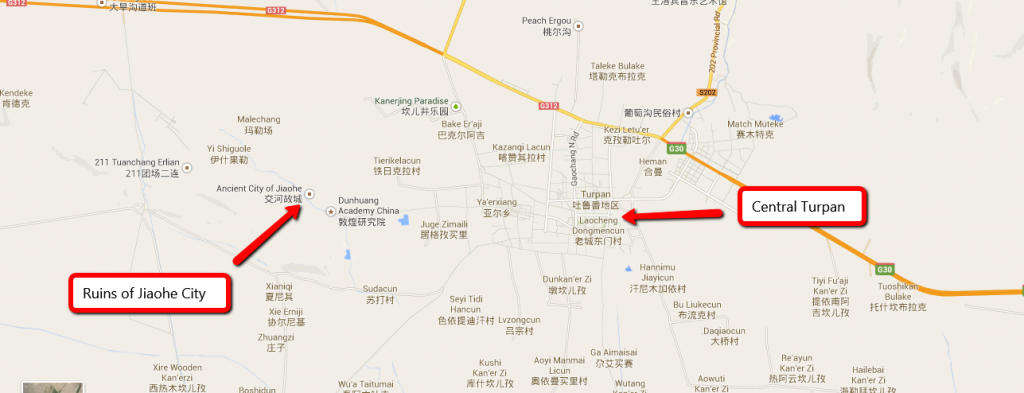
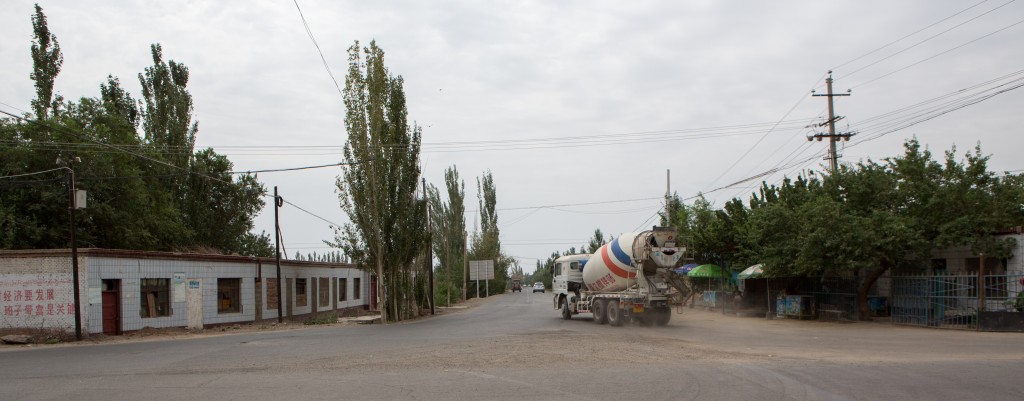
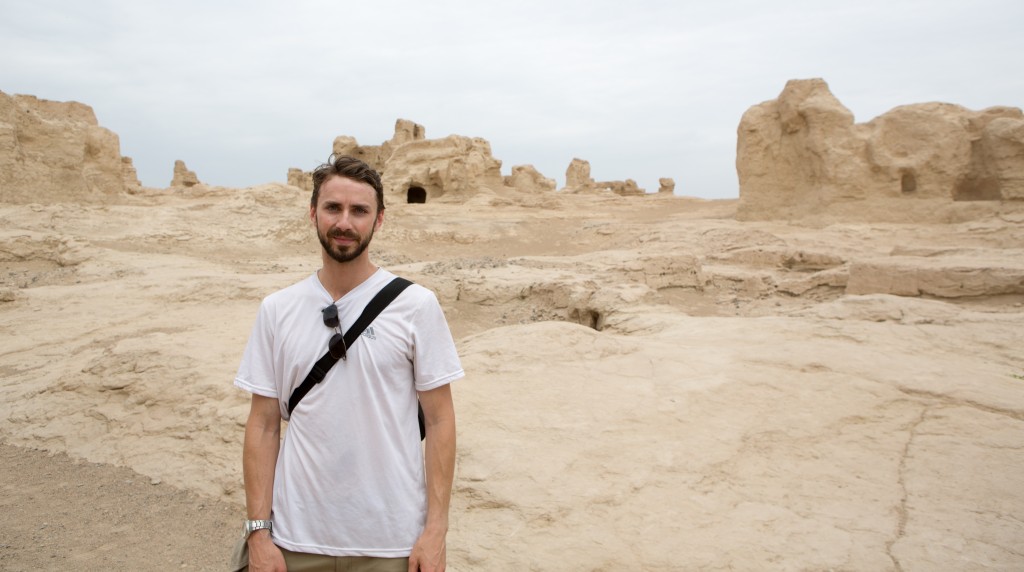
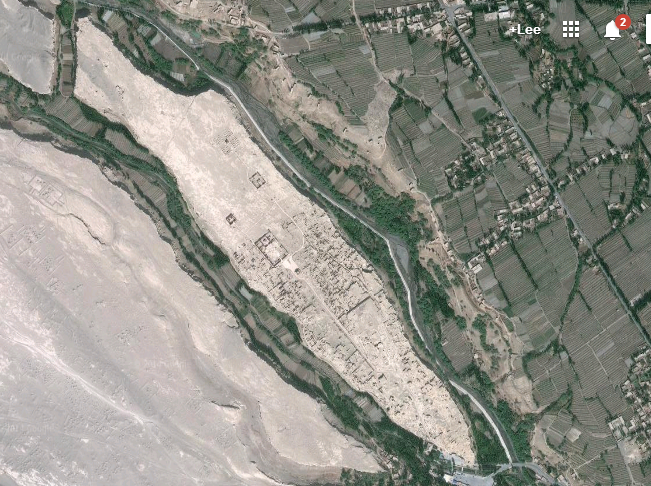
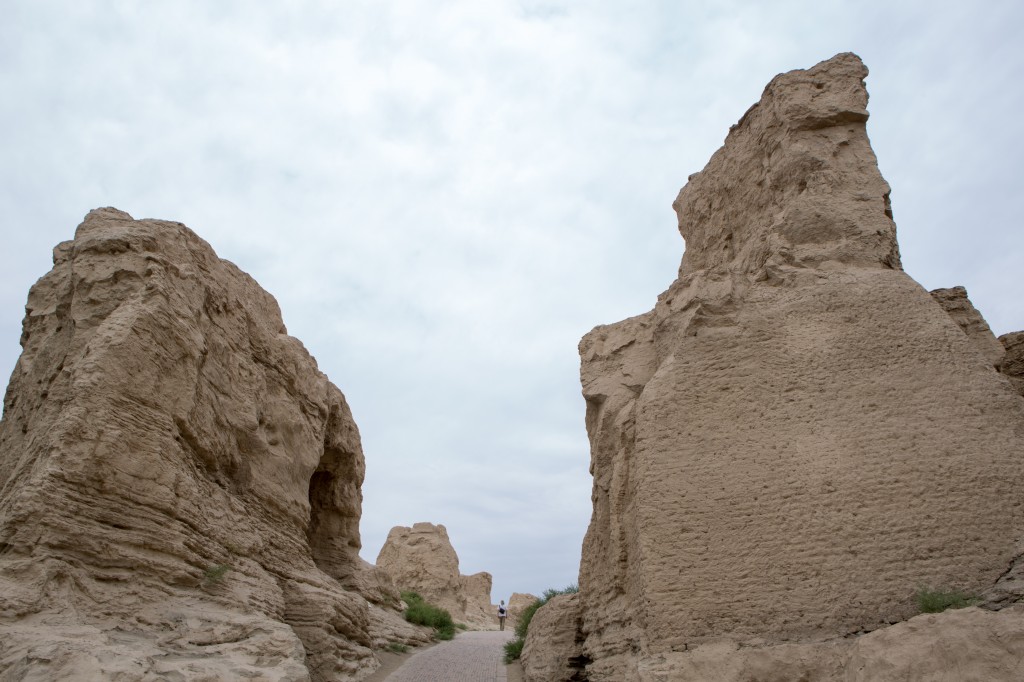
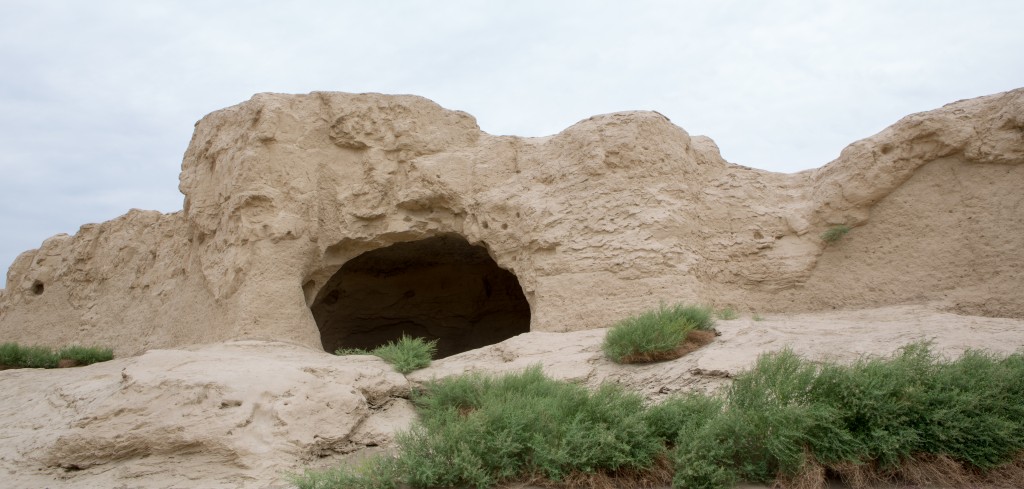
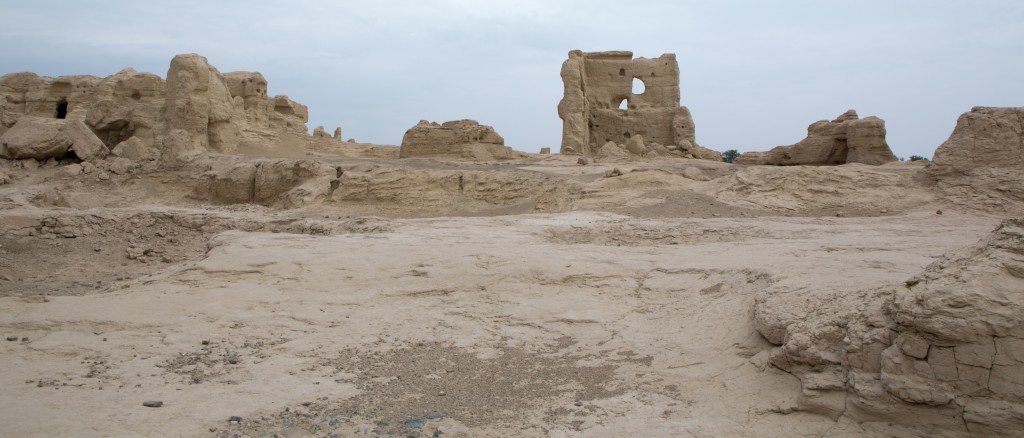
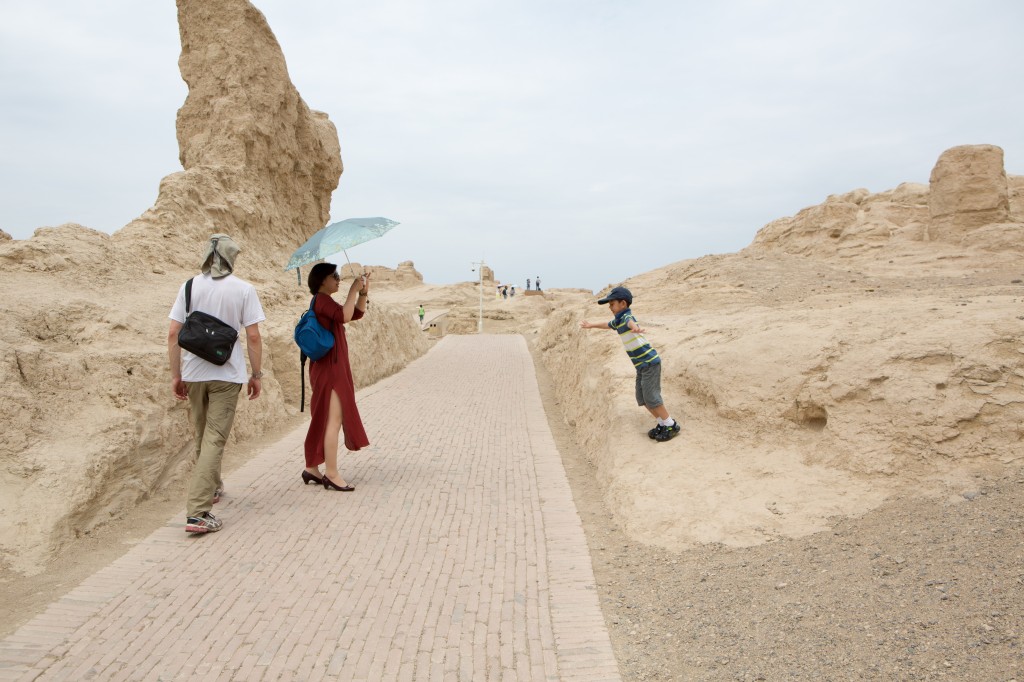
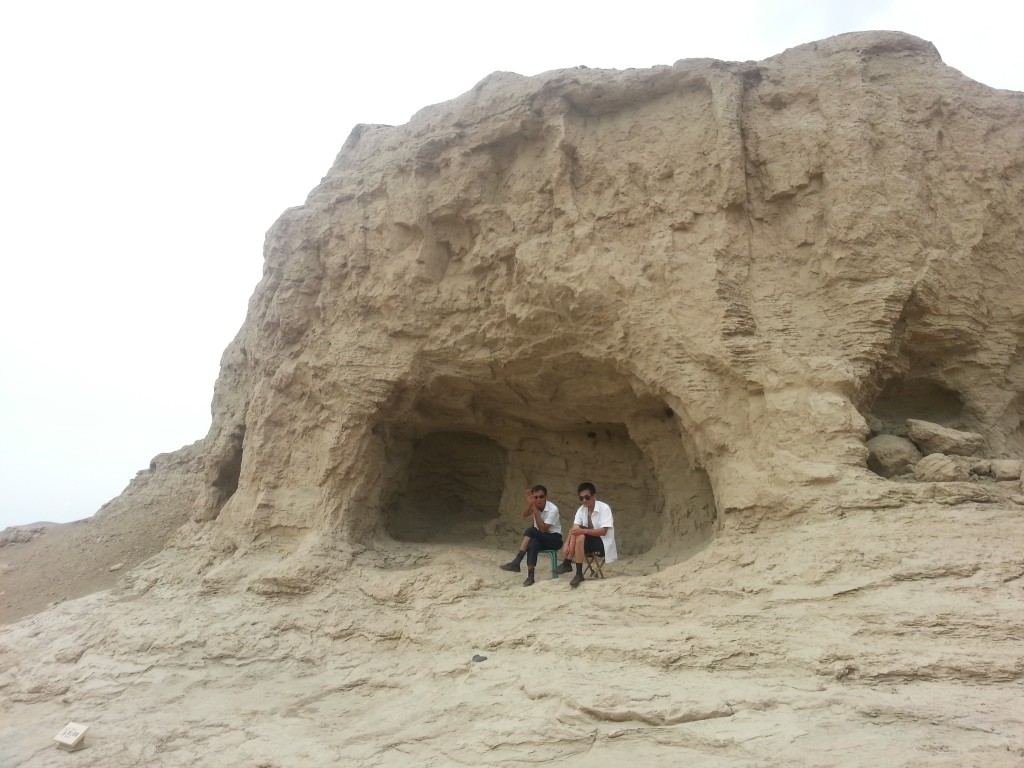
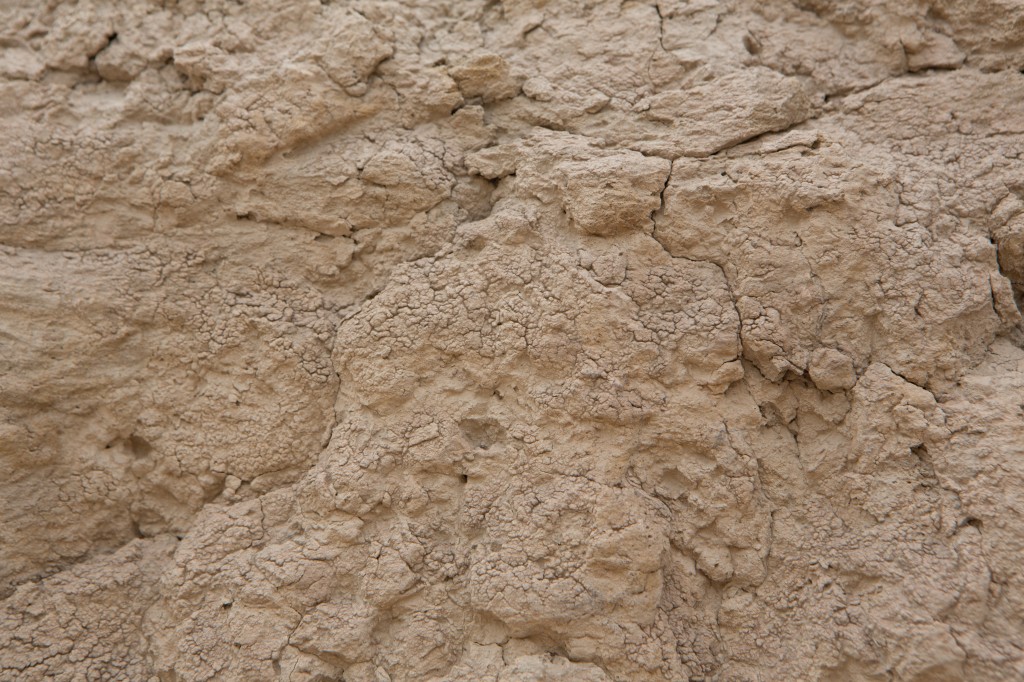
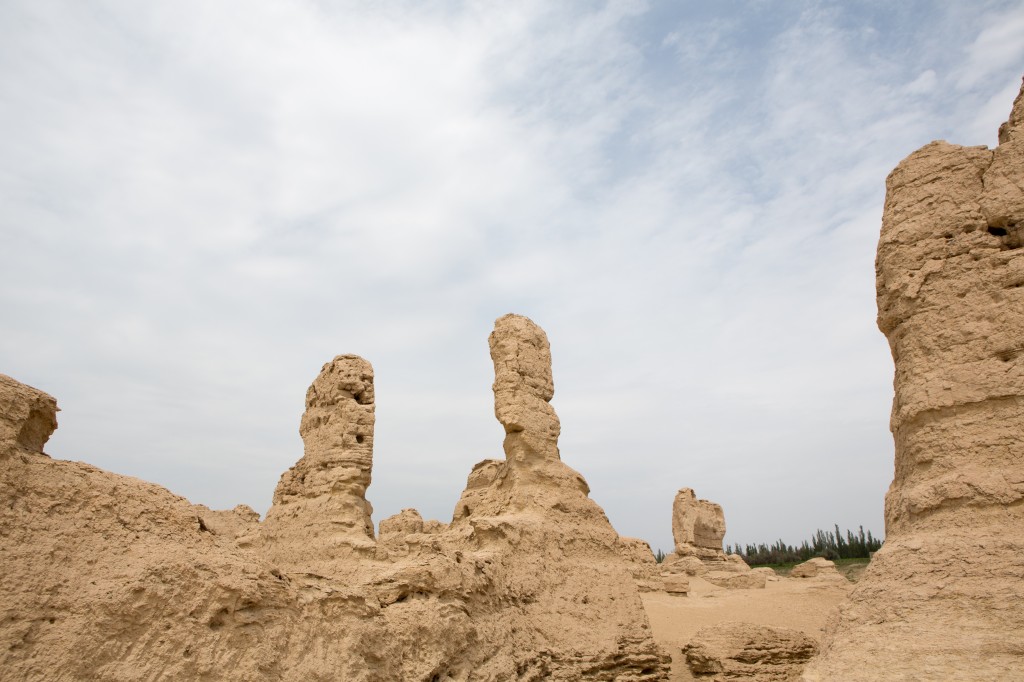
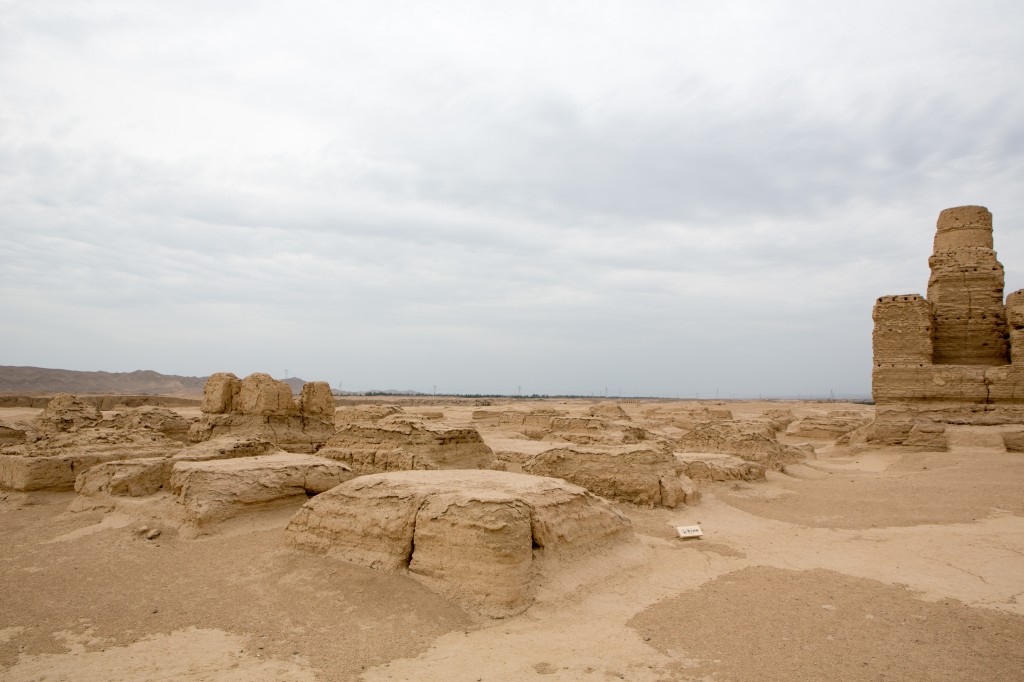
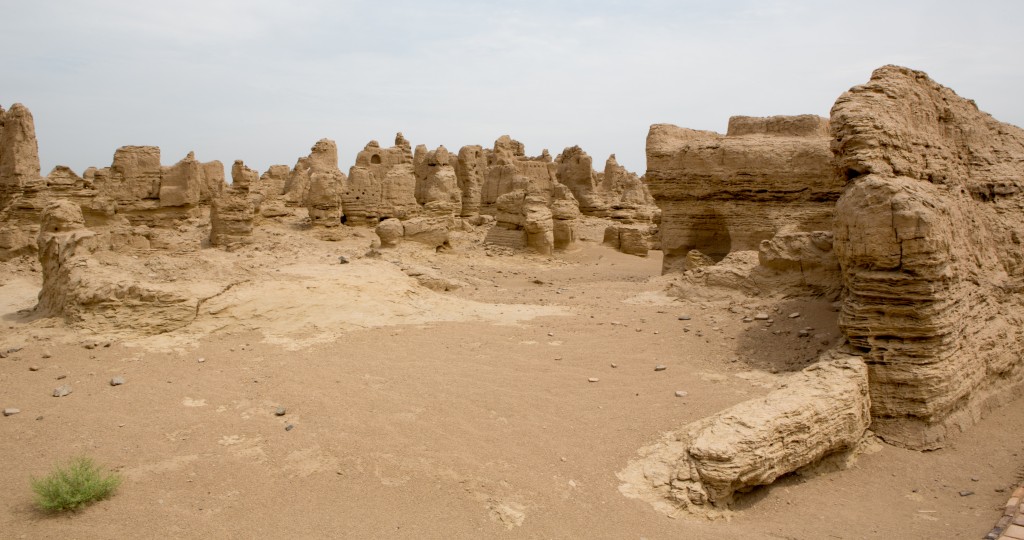
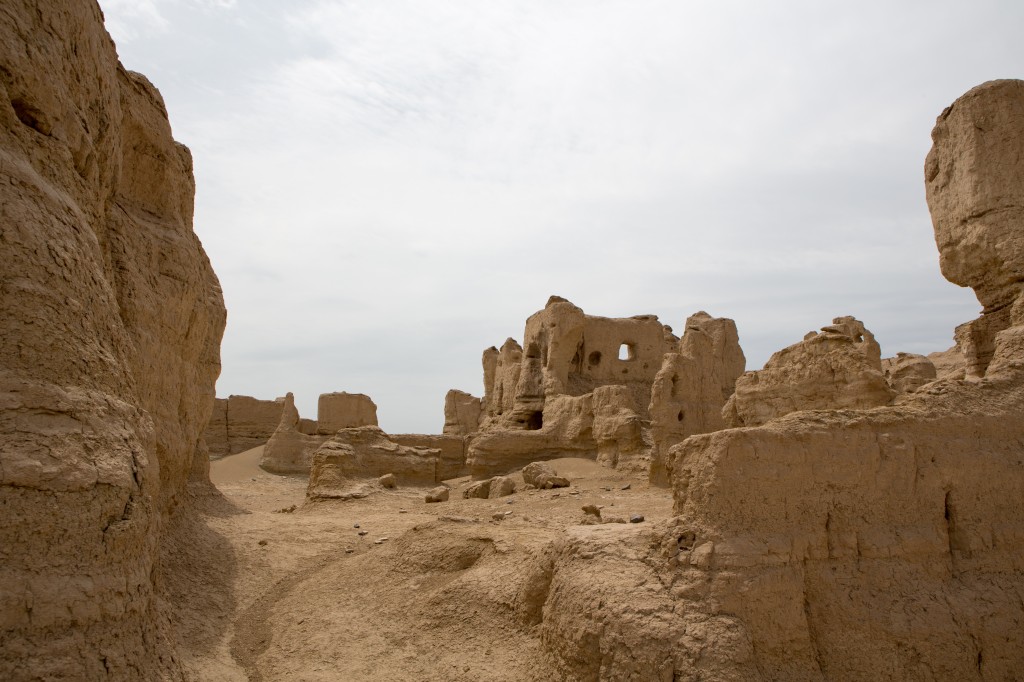
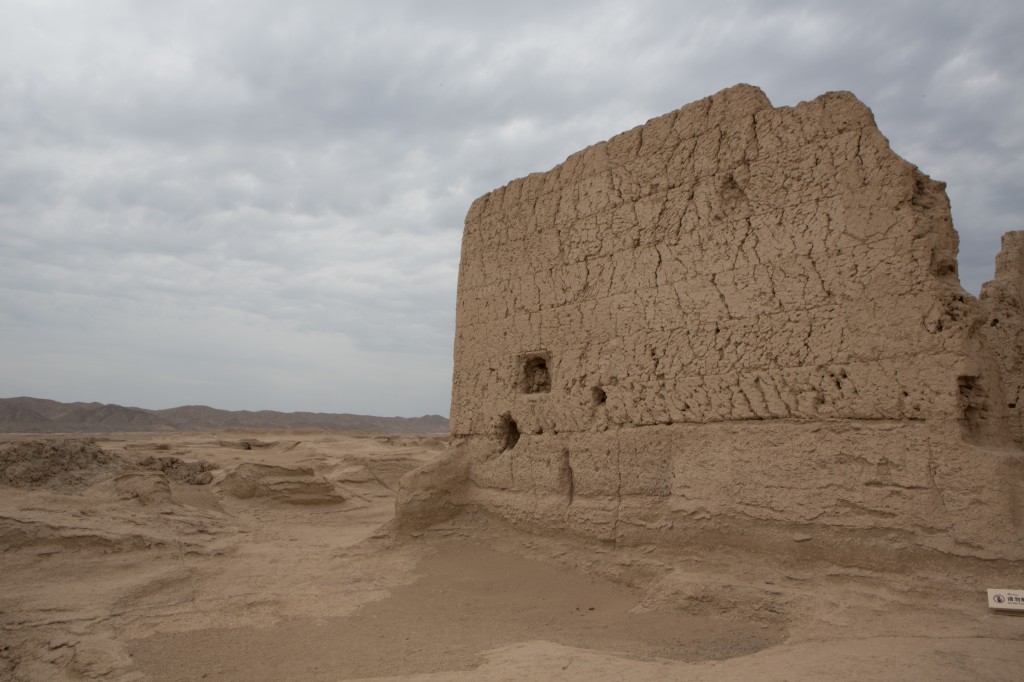
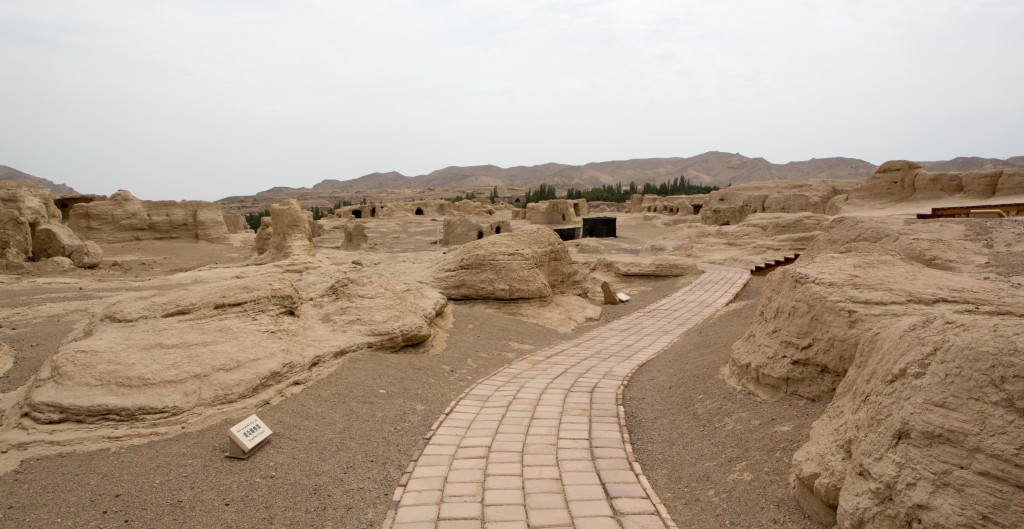
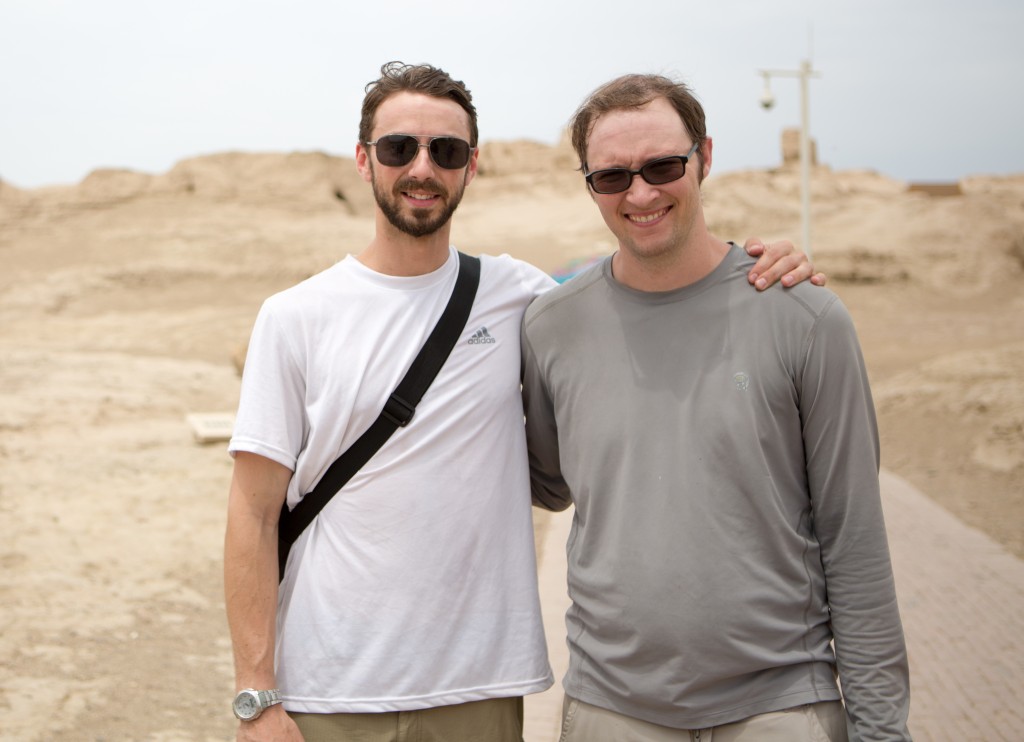
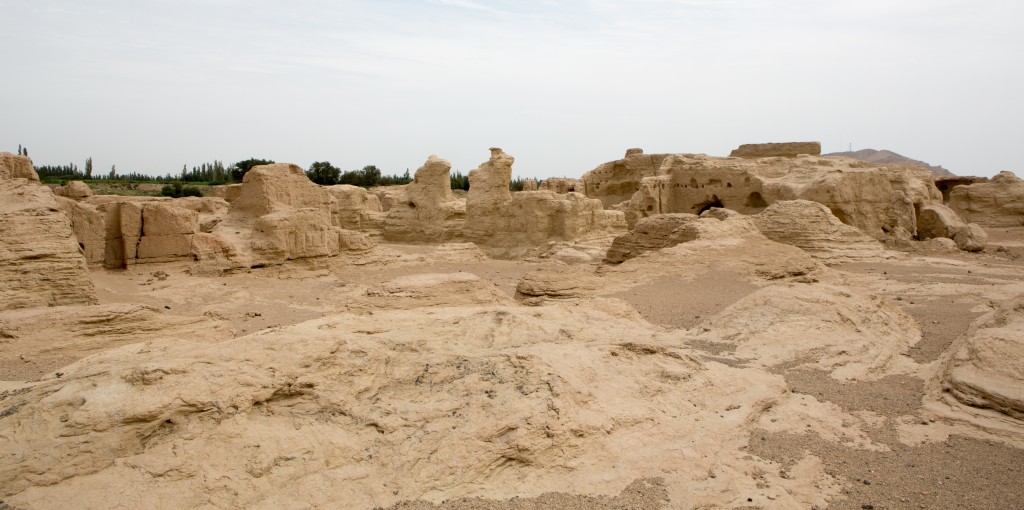
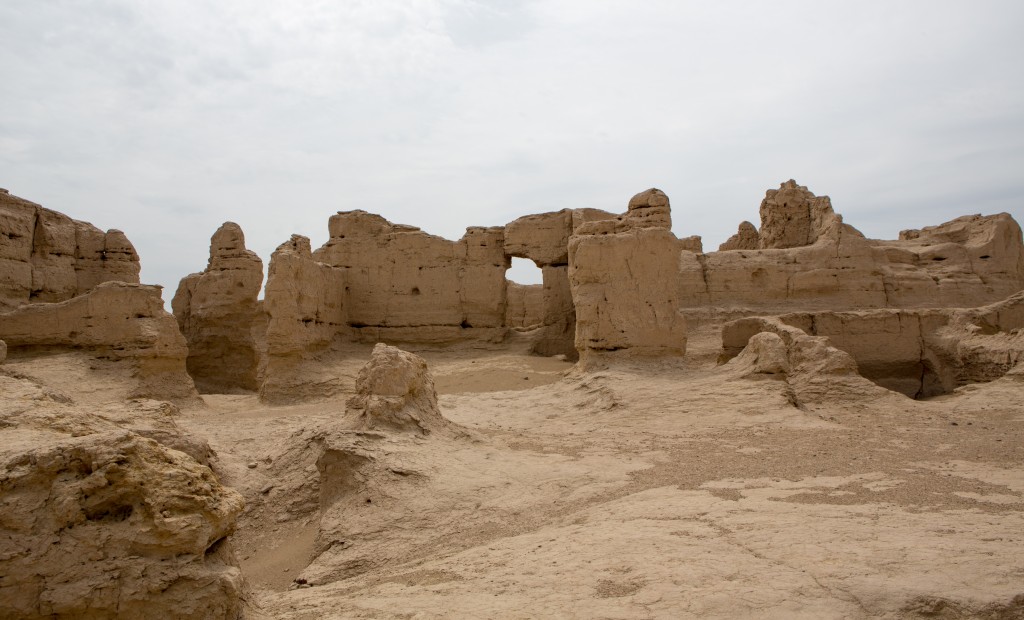
You didn’t mention the piped music playing from speakers disguised as ancient rock stumps.
What?! We missed that.